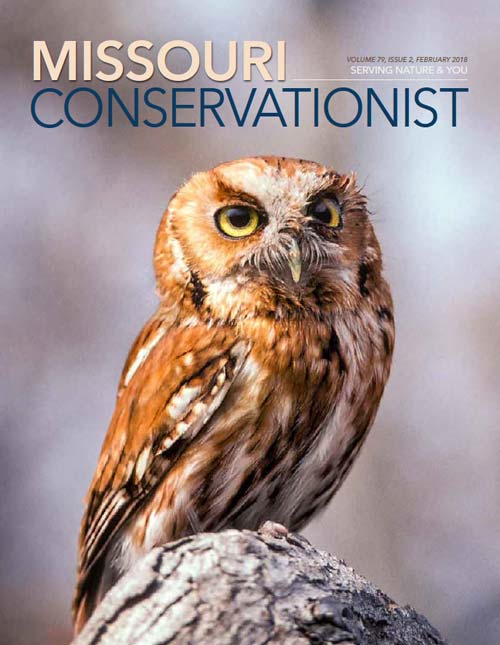“It sounded like a woman was being murdered.”
That’s how the sound was described. It came in spurts — one or two calls followed by silence. Then a few more. And the sound was on the move — through the woods, from one side to the other, it would go. Residents were terrified. Upon further investigation, there was no need for alarm. It was nothing more than an eastern screech-owl (Otus asio) on its nightly hunt.
This is a common reaction to hearing this pint-sized raptor for the first time. Measuring in at just 8 inches, the eastern screech-owl is one of the smallest raptors, second only to the northern saw-whet owl. In fact, from beak to tail, robins and blue jays stand taller. But don’t let its diminutive size fool you. From its appetite to its attitude and especially its voice, the eastern screech-owl lives large and loud.
Hoo’s Calling
Screech-owls have a loud voice, but their calls are rarely described as a “screech” unless they are angry or startled. They trill, whinny, bark, chuckle, peep, hiss, or hoot.
Owl couples trill back and forth to each other when they’re courting and while they’re searching for a place to nest. If you hear this duet, it’s easy to distinguish the males from the females. Male screech-owls, though smaller, have much deeper voices.
Owls call any time of day, but they are most vocal during the twilight and moonlit hours. One of the easiest ways to hear the eastern screech-owl is to drive to a quiet place in the country, away from the noise of traffic, and stop along the road, preferably by open land, forests, or a body of water.
Looks Can Be Deceiving
This species is the only small, yellow-eyed owl with ear tufts in Missouri, but don’t rely on those prominent points for identification purposes. Eastern screech-owls can lower their tufts and conceal them from view.
More reliable identification information includes their coloring. Screech-owls can be gray, brown, or red, though red is the least common in Missouri. Regardless of their color, all screech-owls are patterned with bands and spots that aid in camouflage amongst the trees.
The eastern screech-owl is a stocky bird with a large head, no neck, and a wingspan of 20–22 inches. Its wings are rounded and its tail is short and square.
Home Sweet Home
Screech-owls prefer to make their nests in dead, hollow tree cavities or holes hammered out by woodpeckers. In fact, trees, specifically cedars and pines, define screech-owl habitat. These raptors can be found in open woodlands, forests, rural woodlots, city parks, orchards, or deep woods, and prefer areas with water nearby. Eastern screech-owls are common in towns and suburbs, and they may fledge more young than their rural counterparts due to fewer predators.
Trees are important to screech-owls for another reason — camouflage. After a long night of hunting, these owls like to come back to their nest to rest and get away from predatory hawks and pesky songbirds. Once an owl closes its big, yellow eyes, the camouflage pattern of its feathers easily blends in with the tree’s bark. Some screech-owls take their disappearing act a step further and raise a wing to hide their beaks.
Building a Family
Eastern screech-owls are mostly monogamous — a male and female mate and remain together for life. However, some males will wander and mate with another female. The second female may move into the nest, removing the first female, lay her own eggs, and incubate both clutches.
Typically, four to five eggs are laid from March through May and incubated for 26 days. Owlets are raised for 28 days.
When young owls first leave the nest, their mother defends them fiercely. Cats, squirrels, and humans who wander too close to the helpless young are likely to get dive-bombed or scratched by the female owl’s talons.
Food Fight
For small raptors, screech-owls have a voracious appetite and they aren’t picky. In fact, the list of what a screech-owl will eat is longer than that of any other North American owl. More than 250 kinds of critters make the cut — including beetles, grasshoppers, moths, mice, shrews, moles, crayfish, fish, frogs, and small birds. Animals as big as squirrels and as small as snails go down their gullets. Screech-owls have also been known to tangle with small falcons, pluck fish from shallow pools, and ambush bats on the wing.
Screech-owls, like other owls, have an exceptional sense of hearing and sight, which are used to target their prey. But unlike other owls, this species hunts tiny animals, like insects and smaller rodents, making them unique amongst their raptor family.
Once food is brought back to the nest, it’s every owl for himself. Nest mates fight each other for food, sometimes killing their smallest sibling. This behavior is called siblicide and is not uncommon amongst hawks, herons, and other owls. It’s especially common during periods of poor breeding conditions when food is scarcer and siblings have to fight for what is available.
For more information about eastern screechowls, visit mdc.mo.gov/field-guide.
Seeing Triple
In Missouri, screech-owls come in three colors morphs: gray, red, and brown.
How to Find Screech-Owls
- Though screech owls are elusive and mostly active at night, there are some ways to help pinpoint their location.
- Look for flocks of smaller birds. Listen for a commotion involving blue jays, chickadees, and titmice. Songbirds often swoop and squawk at owls to alert other birds of a predator’s whereabouts and teach young birds that owls are dangerous. This behavior is called mobbing.
- Listen for screech-owl trills and whinnies at night. Screech-owls are especially noisy during a full moon and before stormy weather.
- Search the base of trees for owl pellets.These pellets are a sure sign of roosting screech-owls up above. Screech-owls gobble prey whole and regurgitate the bones, fur, teeth, insect shells, and feathers into oval-shaped, grayish brown pellets once or twice a day.
- Look for woodpecker holes and tree cavities on cold, sunny days. Bundle up for the cold and head outside. You just may find a sleepy screechowl soaking up the warm winter sunshine.
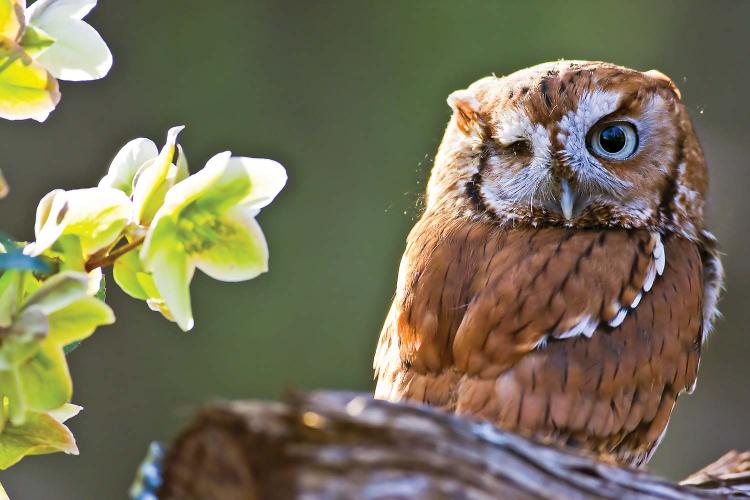

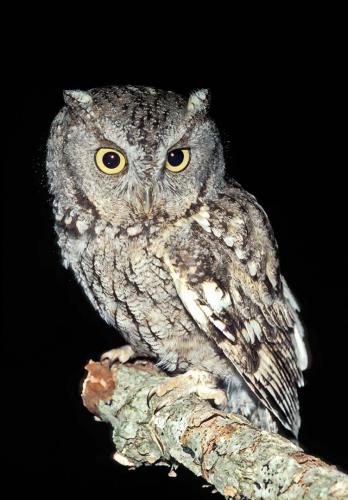

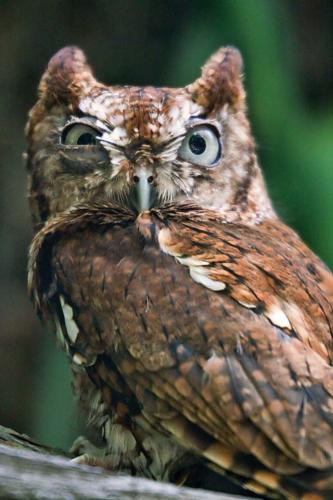
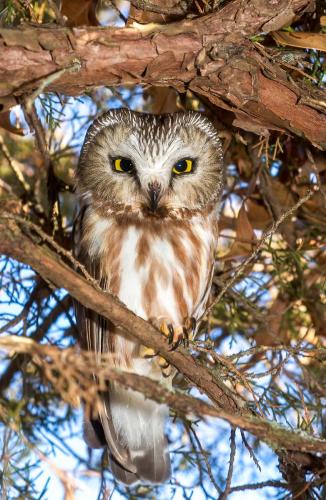
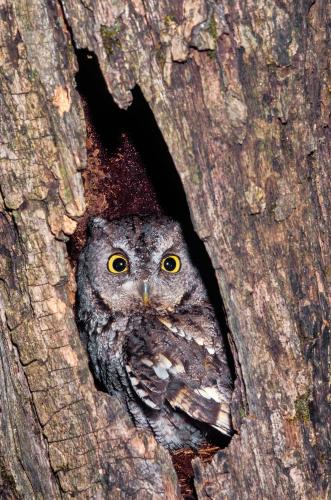






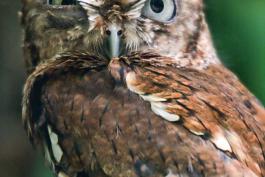
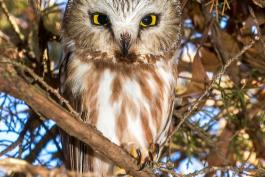



Also In This Issue


And More...
This Issue's Staff
Associate Editor - Bonnie Chasteen
Staff Writer - Larry Archer
Staff Writer - Heather Feeler
Staff Writer - Kristie Hilgedick
Staff Writer - Joe Jerek
Creative Director - Stephanie Thurber
Art Director - Cliff White
Designer - Les Fortenberry
Designer - Marci Porter
Photographer - Noppadol Paothong
Photographer - David Stonner
Circulation - Laura Scheuler






















